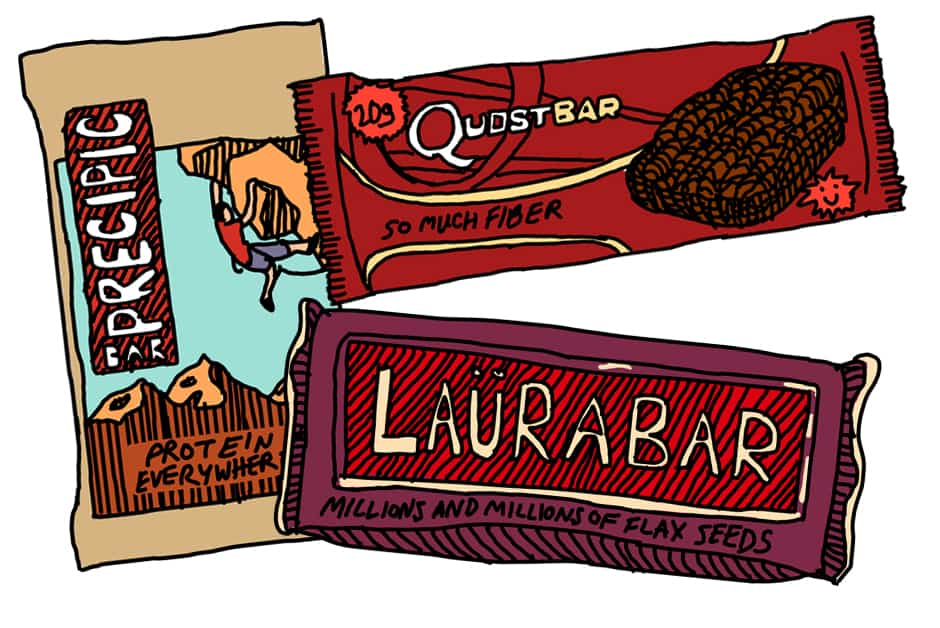Walking to and from class, especially around the Goldring Center and Benson Building, you would be hard pressed not to notice the number of students adorned with Varsity garb and huge Adidas duffle bags, hustling either to or from practice. Other than the fact that they all belong to university teams or clubs, the factor which unifies these students is the array of protein bars that they furiously scarf down.
Nutrition is an important facet in the daily life of a university student, particularly athletes, and finding time to prepare and eat a healthy meal is often a challenge.
Fortunately, if being students has taught us anything, it’s how to be resourceful — enter, energy bars.
As a connoisseur of these glorified bars, I maintain that energy bars (sports bars, nutrition bars, protein bars) are the most convenient option while travelling from the weight room to class and to practice, and often double as a meal replacement for students on the go.
The most popular of these bars, in my experience, have been Clif Bars: dense, sweet, and deliciously textured; Larabars: small, light, and all natural; and Quest Bars: chewy, microwavable, and with an assortment of flavors.
Although these bars act as a stand-in for a home-cooked meal, do they provide enough nutrition as a full meal? Do they actually do an optimal job at replenishing your body before or after a workout?
Professor Denis Collier of NFS302, Nutrition, Athletics, Performance and Behavior, recognizes the two main nutrients critical to performance: protein and carbohydrates.
“There is no magic ‘ratio’ of protein versus carbohydrate for recovery,” explains Collier, “However… those two nutrients are likely of most importance.”
In terms of recovery, Collier suggests that 20 grams of protein is the magic amount that we need in our post-workout snack.
Collier also explains that this number does not vary greatly depending on your age, gender, or mass.
“There is pretty solid evidence of the benefits of a serving of 20 grams of high quality protein,” details Collier, adding, “As a general rule, this is the number for protein that I go with and it doesn’t change greatly from person to person.”
Carbohydrates, however, are more difficult to figure out. With no magic number that works universally for everyone, the amount of carbs to consume after a workout depends on the level of fitness you’re striving to achieve.
“Very much unlike protein, the carb requirement stands to vary enormously between people,” explains Collier, who emphasizes that the level and intensity of your training are directly related to the amount of carbs you need to consume after a workout.
“[People with] no great aspirations to be a specimen of physical fitness…[and] work out to be healthy and maybe even lose a few pounds… could likely get away with a post workout carb intake of zero,” he says.
With many of us on campus hitting the gym in order to stay fit and socialize, many of us can abide by that rule.
“Making such a person think they have to capitalize on some quickly closing window of carbohydrate recovery could be counterproductive as you’re giving them another reason to eat,” Collier says.
“Most people don’t need another reason to eat,” he concludes.
With these ratios and guidelines in mind, how do the, arguably, three most popular energy bars hold up?
Clif Bar
Boasting a list of vegan ingredients and 250 calories, Clif Bar’s Black Cherry Almond Original Energy Bar has only 10 grams of protein for 1 bar, so you’d have to consume double to get the recommended dosage. However, the bar does include 43 grams of carbohydrates, making it a suitable post-workout snack for a high-level athlete.
Larabar
Coming in at 230 calories per bar, Larabar’s peanut butter flavored bar contains even less protein at seven grams per bar and 23 grams of carbohydrates. However, the bar only contains three ingredients (peanuts, dates and sea salt), making it the most natural option.
Quest Bar
Quest Nutrition’s cookies and cream protein bar has the highest level of protein per bar at 21 grams, but balances it out with 22 grams of total carbohydrates. At 180 calories per bar, it is also the lightest option on the list.


